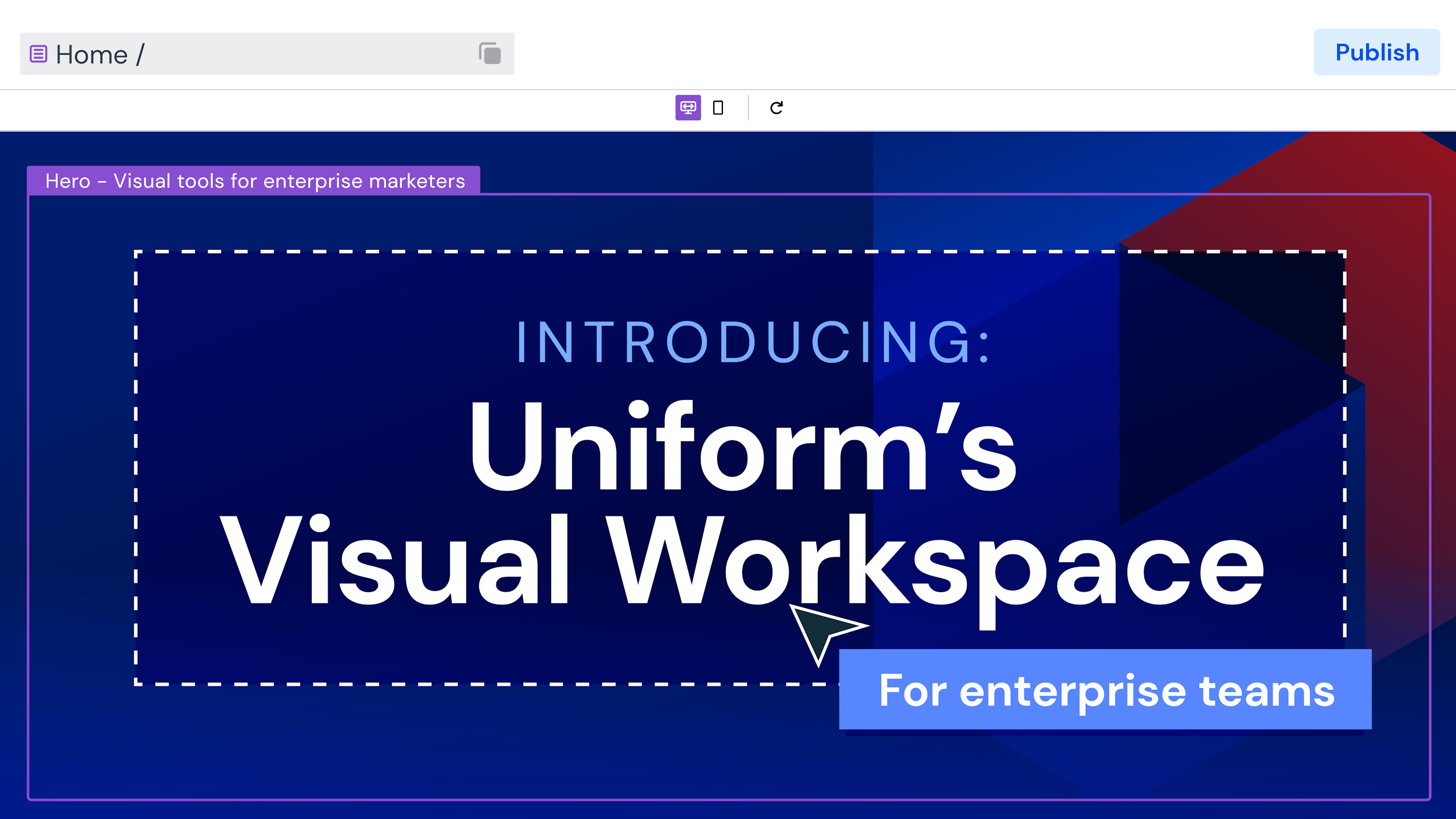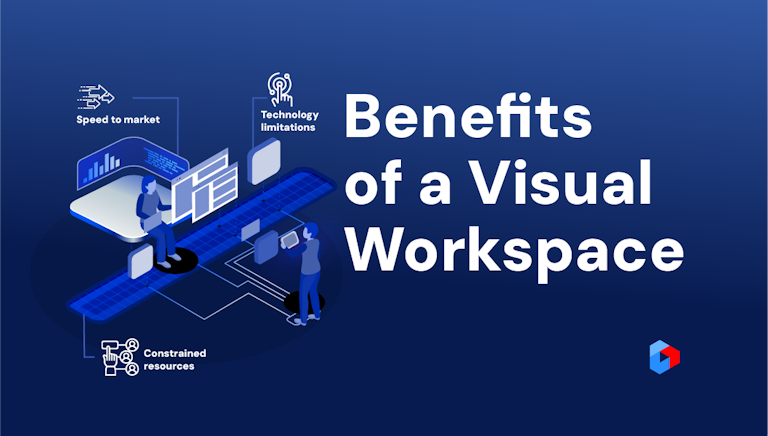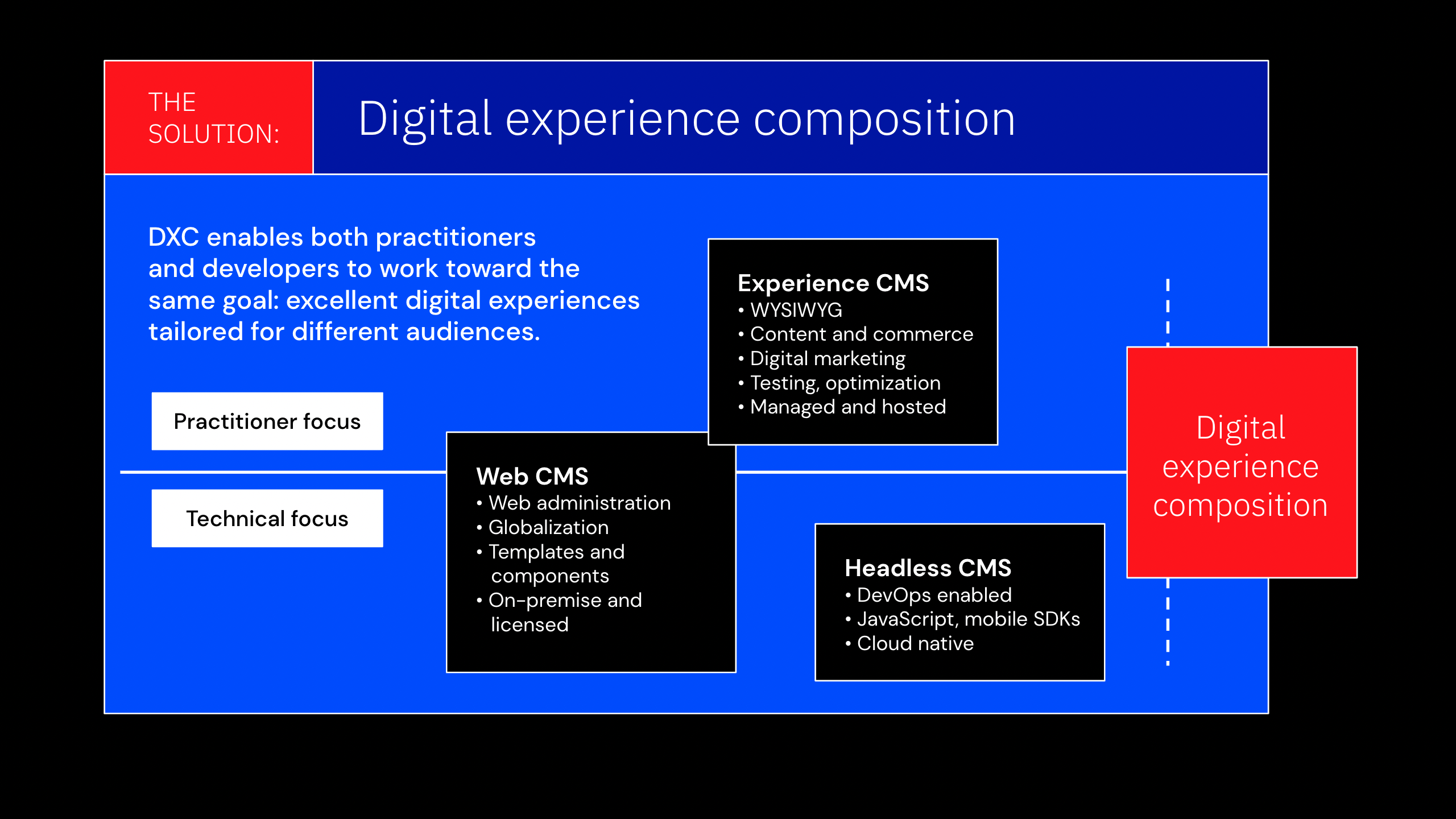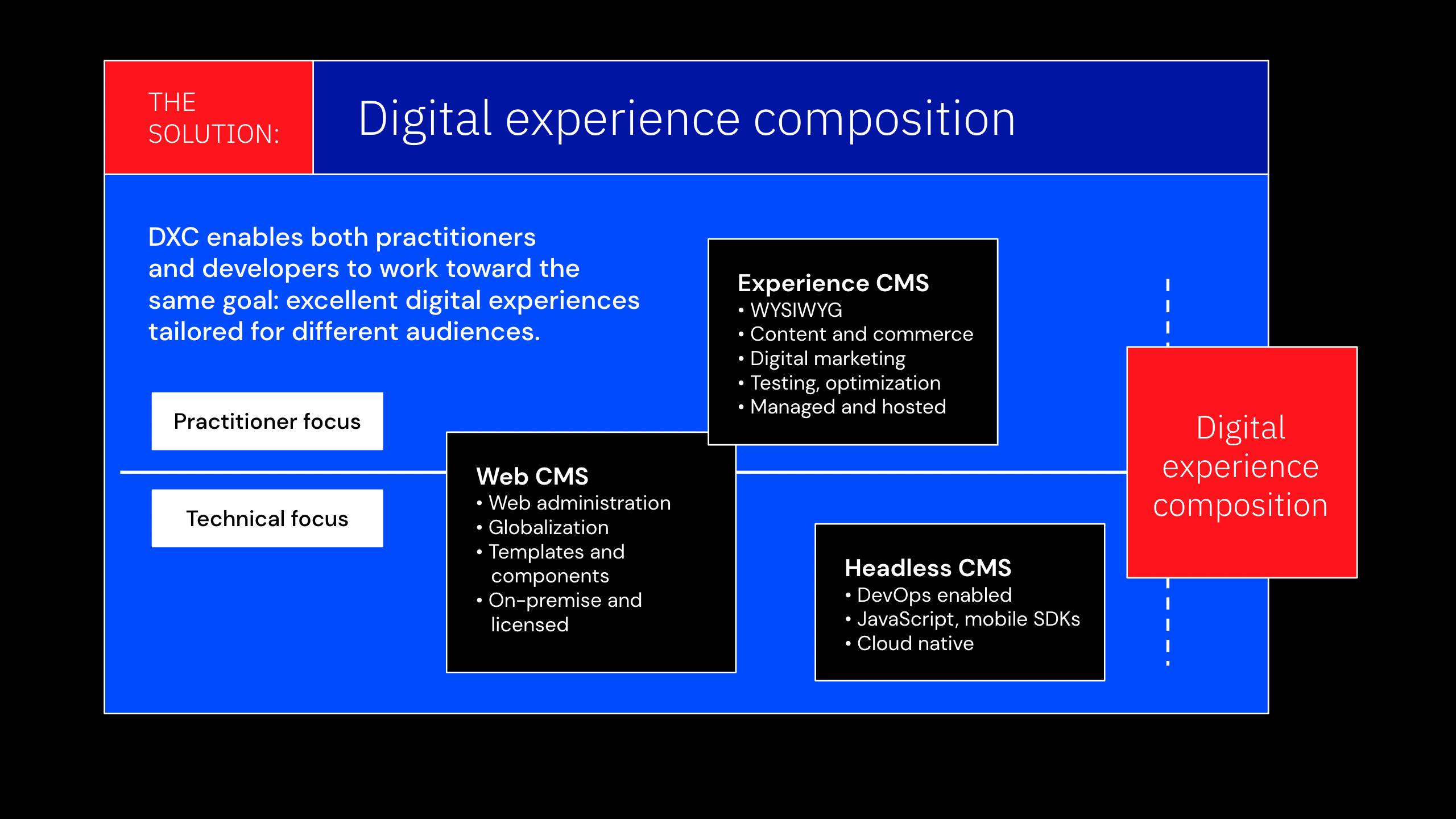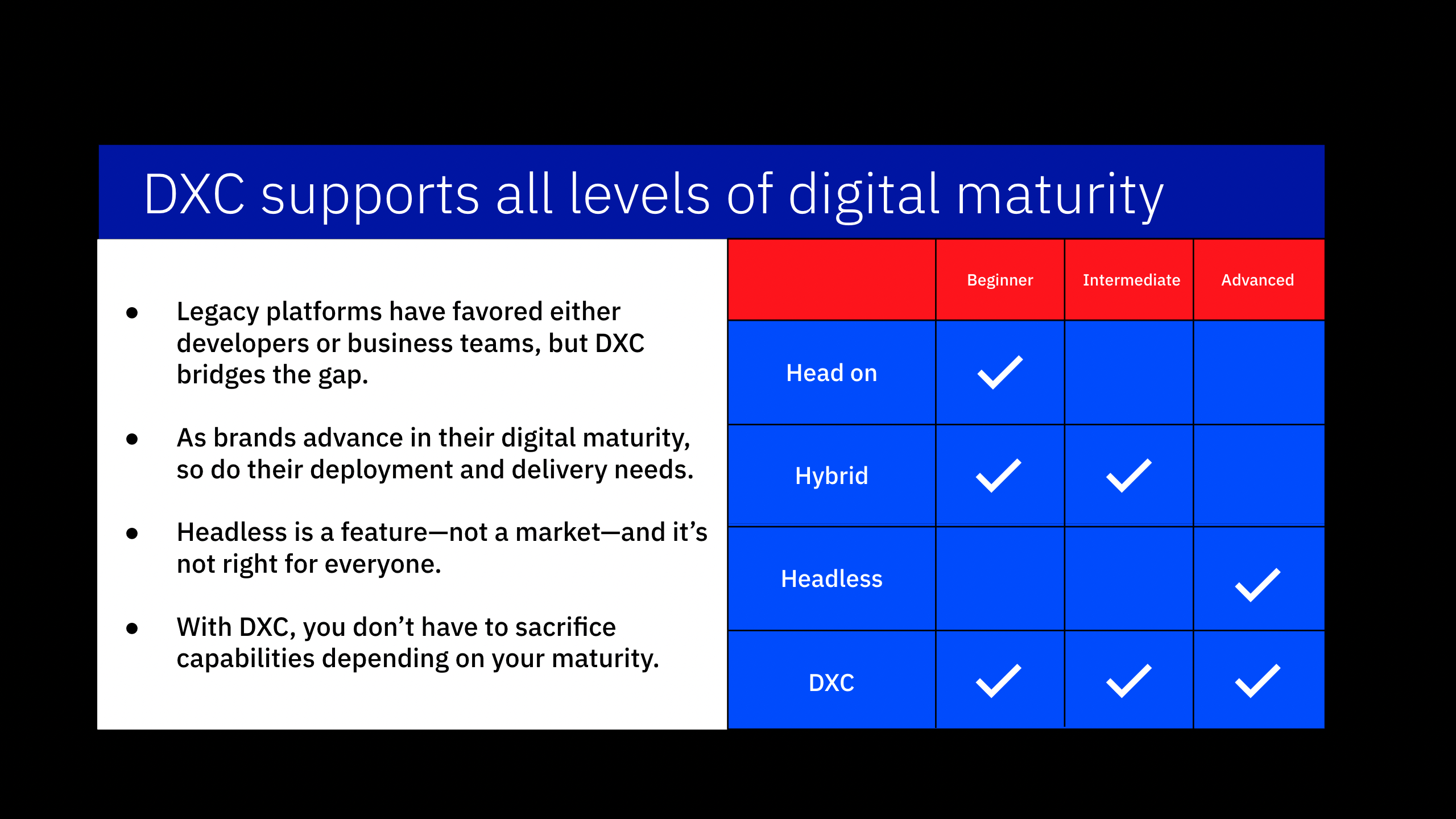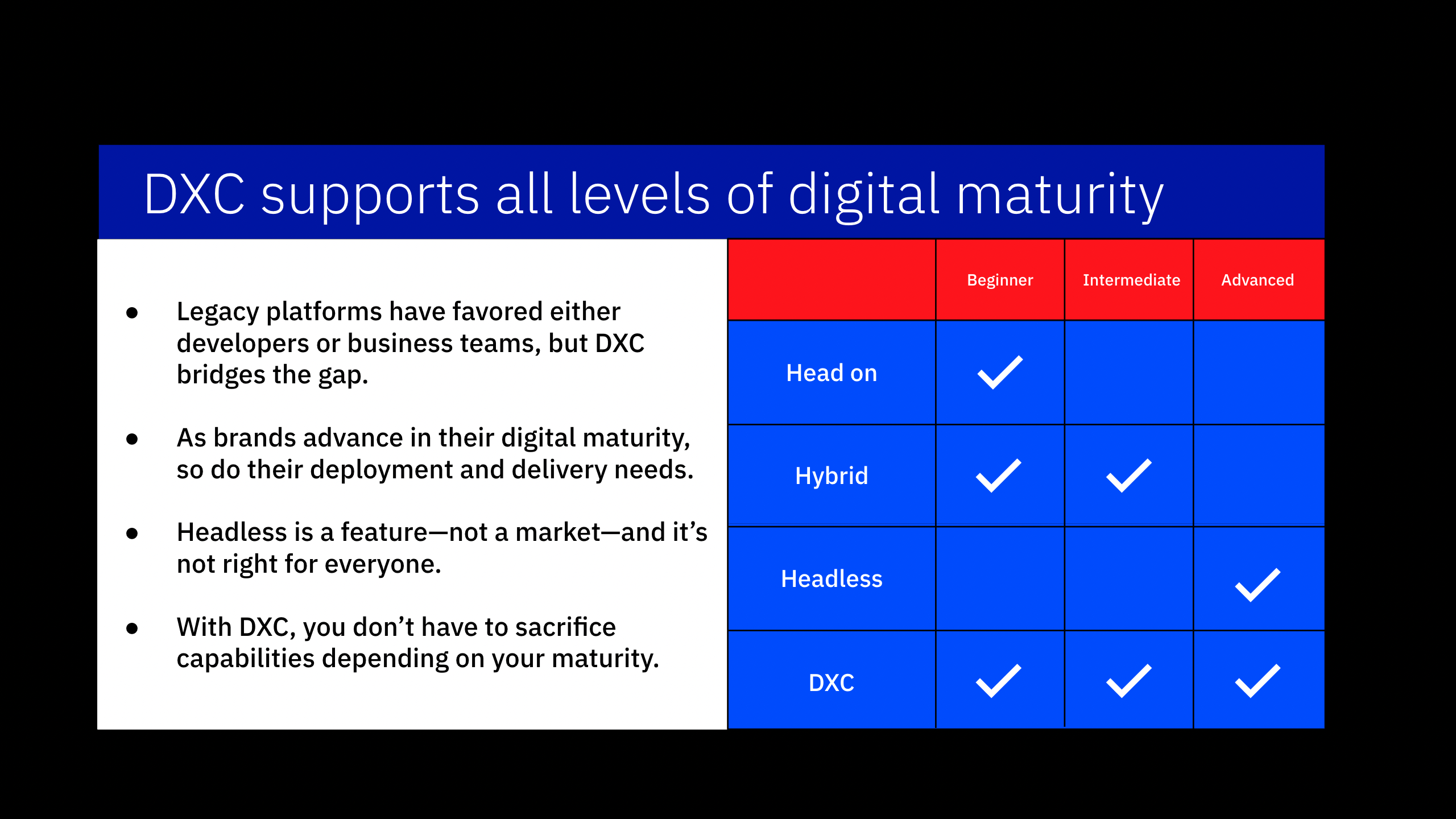Uniform blog/Balancing team workflows with composable architectures
Balancing team workflows with composable architectures
Balancing team workflows with composable architectures
The past two decades saw a pendulum swing of the workflow for creating digital experiences, from favoring technical teams and leaving marketers and business users out in the cold to accommodating practitioners and putting developers in a bind. And back again and again. As a result, organizations missed out on the most crucial requirement of digital-experience creation: a workflow that meets the needs of both developers and practitioners, enabling organizations of all digital-maturity levels to deliver differentiated customer experiences.
Along with Lars Petersen, I discussed at length the past swings and the current trends at a recent CMSWire webinar, Digital experiences without drama: Empower marketers and streamline development. This post summarizes our conversation.

Tracking the pendulum
In their early days, web-based CMS tools were on-premise, licensed, and templatized, relying heavily on developers to create user experiences. The 2000s ushered in an experience CMS, which brought marketers into the fold. I like to joke that the great thing about that era was that everyone could create a digital experience, and the awful thing about that era was that everyone could create a digital experience. For good reason: That setup led to errors and inconsistencies galore.
Over the last few years, the embrace of headless, cloud-native, and JavaScript-based CMSes has led to a swing back to a developer-centric approach. For all the hype, however, practitioners were ultimately left wondering, “Where did my tools go? How do I create a page? How do I create an experience?”
The challenge has been in bridging the divide, yet a tool that satisfies both developers and practitioners didn’t emerge until recently.
Serving both developers and practitioners
The resolution to the pendulum-swing conundrum lies in a new category digital experience composition, where companies can achieve true composability throughout the workflow. An example of making that happen is Uniform Digital Experience Composition Platform (DXCP), whose no-code orchestration layer enables experience creation by marketers, merchandisers, and other business users regardless of how composable services in the back end are connected.
Today, tech stacks based on a composable architecture with DXCP-powered orchestration serve developers and practitioners equally well. Through composability, those professionals can work toward the same goal: excellent digital experiences tailored for different audiences.
For instance, practitioners can focus on tasks in their wheelhouse, such as creation of content and commerce, digital marketing, testing, and optimization. Separately, developers can use their front end of choice, which is connected to underlying technologies through DXCP, thus eliminating the need for glue code and freeing up developers to focus on value-added development tasks.
For both teams, composable offers four important promises:
- Enhanced content and data velocity throughout the customer journey. With composable, you can serve the right content and data from a single point at the right time—whether during the discovery or advocacy phase, or at the transaction point.
- Optimum collaboration among all users. Composability makes for a concerted workflow across all teams. No longer is it developers over here and marketers over there, and ne’er the two shall meet.
- Fast, reliable performance. Speedy deployment of digital experiences results in fast time to value regardless of channel, meeting consumers where they want to be—or even anticipating where they are going.
- More employee satisfaction. Both business users and developers can do their job better on a composable platform, which fosters collaboration and enables seamless transition points throughout the experience-creation journey.
Supporting all levels of digital maturity
Another advantage of composable tech stacks is their support for organizations across the digital-maturity spectrum. As brands gain expertise in the cybersphere, so do their deployment and delivery needs—and composable can meet those needs regardless of where a company is in that journey.
Composable platforms bridge the gap between developers and practitioners that exists in legacy platforms by offering organizations two choices:
- Remain on a legacy platform and update it with new headless solutions that run on composable.
- Replatform to a composable architecture.
Either way, organizations need not sacrifice capabilities depending on the level of their digital expertise.
Staying ahead through composable
As the marketers-versus-developers pendulum finally comes to rest, brands that adopt well-orchestrated composable systems can deliver next-gen digital experiences, balance the demands of teams, and better prepare for the upcoming trends in creating experiences.
For more details, watch the webinar.

Bring harmony to internal teams with composable technologies
WATCH ON DEMAND